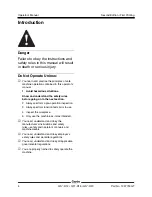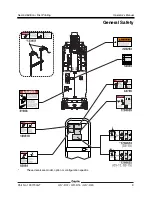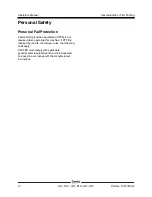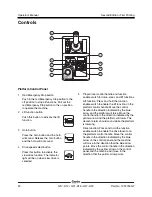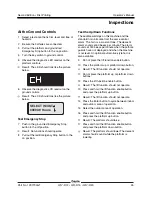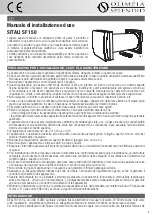
Second Edition • First Printing
Operator's Manual
Work Area Safety
Part No. 1297730GT
QS
™
-R12 • QS
™
-R15 • QS
™
-R20 17
Battery Safety
Burn Hazards
Batteries contain acid.
Always wear protective
clothing and eye wear when
working with batteries.
Avoid spilling or contacting
battery acid. Neutralize
battery acid spills with baking
soda and water.
Do not expose the batteries or the charger to water
or rain during charging.
Explosion Hazards
Keep sparks, flames, and
lighted tobacco away from
batteries. Batteries emit
explosive gas.
The battery tray may remain
open during the entire
charging cycle.
Do not contact the battery
terminals or the cable
clamps with tools that may
cause sparks.
Component Damage Hazard
Do not use any battery charger greater than 24V to
charge the batteries.
Electrocution/Burn Hazards
Connect the battery charger to a
grounded, AC 3-wire electrical
outlet only.
Inspect daily for damaged cords,
cables and wires. Replace
damaged items before operating.
Avoid electrical shock from contact with battery
terminals. Remove all rings, watches and other
jewelry.
Tip-over Hazard
Do not use batteries that weigh less than the
original equipment. Batteries are used as
counterweight and are critical to machine stability.
Each battery must weigh a minimum of
62 lbs/28 kg.
Lifting Hazard
Use the appropriate number of people and proper
lifting techniques when lifting batteries.
Lockout After Each Use
1
Select a safe parking location—firm level
surface, clear of obstruction and traffic.
2
Lower the platform.
3
Turn the key switch to the off position and
remove the key to secure from unauthorized
use.
4
Charge the batteries.
Summary of Contents for Genie QS-12R
Page 57: ......


